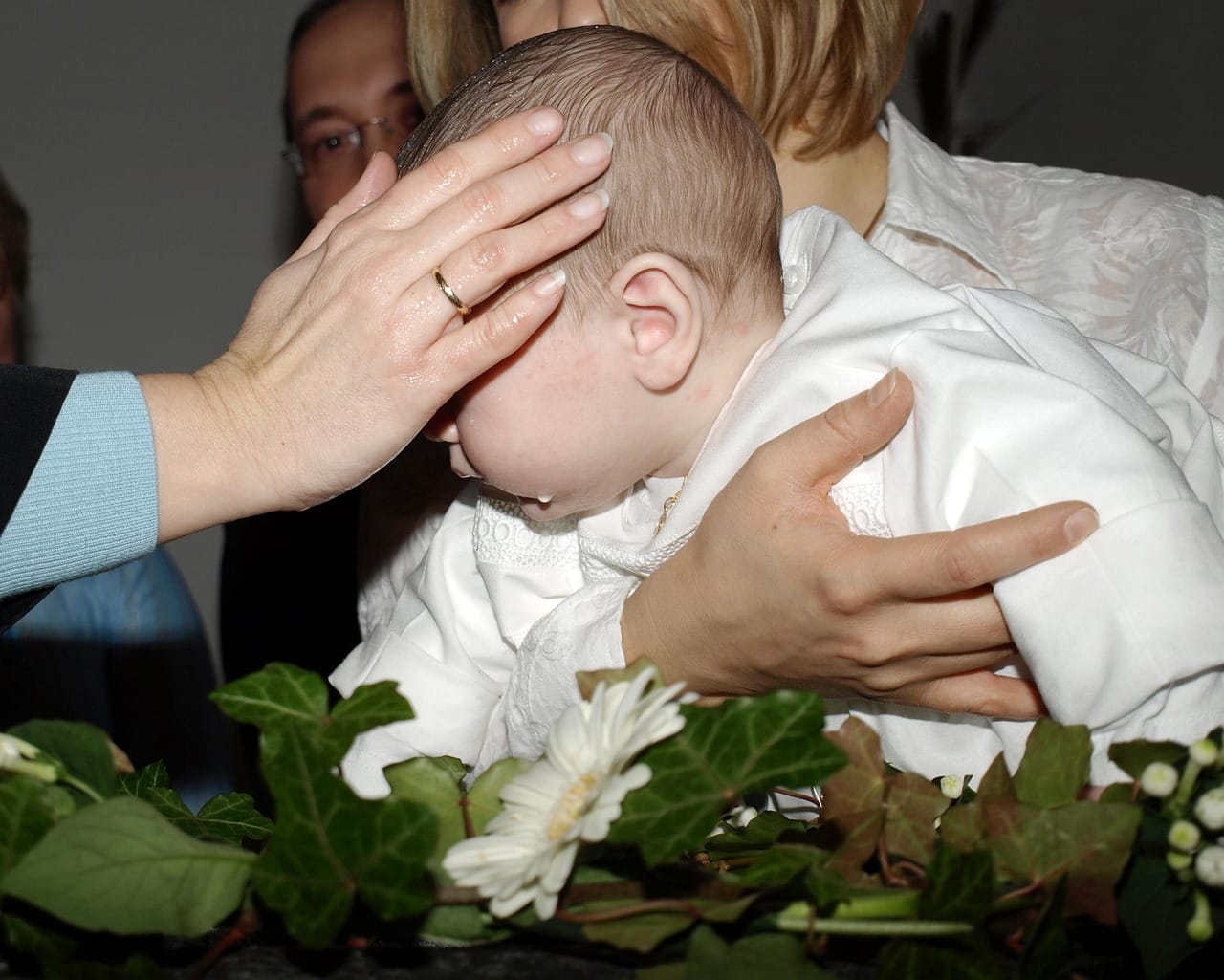
To put on Christ
Sacramentum: The Baptismal Garment
Sacramentum explores the sacraments of the Catholic Church – the depths of their meaning, history, and, above all, the impact they have on each of us in our daily faith lives. This article will focus on the significance of the Baptismal Garment. It is written by Sr. Connie Harkin, SSND.
Another practice and symbol we observe in the Sacrament of Baptism is the presentation of the white garment. Why not green or blue or purple? It is said that the colour white contains all the colours of the spectrum. The colour white also bespeaks of newness, vitality and purity. We are to begin anew from the life we inherited through original sin from Adam and Eve, our first parents, through whom we received the propensity and disposition to do wrong. At Baptism, now we encounter life with God – as a new creation.
The Baptismal ritual, at the reception of the white garment, states these simple but profound words: “…. You have become a new creation, and have clothed yourselves in Christ. See in this white garment the outward sign of your Christian dignity. With your family and friends to help you by word and example, bring that dignity unstained into everlasting life of heaven.”
In the Book of Genesis, we recall how God provided our first parents with all that was good, including free will. However, we do know well how Adam and Eve responded to such a gift! Through the fall of Adam and Eve sin entered the world and entered our nature.
But God has not left us without help, without a path to salvation from the consequences of sin. According to Canon Law 849, “Baptism, the gateway to the sacraments, is necessary for salvation, either by actual reception or at least by desire. By it people are freed from sins, are born again as children of God, and, made like to Christ by an indelible character, are incorporated into the Church”.
Baptism is one of the three Sacraments of Initiation (the others being Confirmation and Eucharist). We read in the Catechism of the Catholic Church that they “lay the foundations of every Christian life”. The Catechism expresses to the beauty of these sacraments and sacred moments in one’s life: “The faithful are born anew by Baptism, strengthened by the sacrament of Confirmation, and receive in the Eucharist the food of eternal life”. (CCC 1212)

And so, with baptism one begins the journey of faith. One could say, we have become a “work in progress”. Most of us will admit that the pure white garment is a delight to the eyes. But how upsetting it can be to make a stain on it until we are able to restore it through a cleansing process. In fact, the white garment symbolizes that the newly baptized has “put on Christ” who died for us, who redeemed us, and in Him, we are saved.
In the early Church of the third century, adults being received into the Church donned long white robes. This was to remind them and others that these Baptism robes now signified that they had begun a new life. These new Christians were clothed in Christ who shared their lives. We have maintained this custom for the children and also, for the adults to wear white on their day of Baptism. Furthermore, it is the hope and desire of the new Christian to keep it unstained until he/she meet the Lord in heaven. You may notice that at funerals in the Church, a white pall or covering is placed over the casket. This is to recall the reception of the white garment at one’s baptism. It is a significant reminder for all who grieve the loss of a loved one. A gentle explanation of this symbol is encouraged to be of comfort and strength to those who mourn, to know that the journey of faith is completed here on earth.
In the purity of the white garment, the newly baptized has “put on Christ” . It is a time for “celebration, festivity, to enjoy the fullness of life to be lived in the spirit of the Risen Christ” (Your Child’s Baptism, pg. 12). Let us be happy! Let us rejoice! Alleluia!